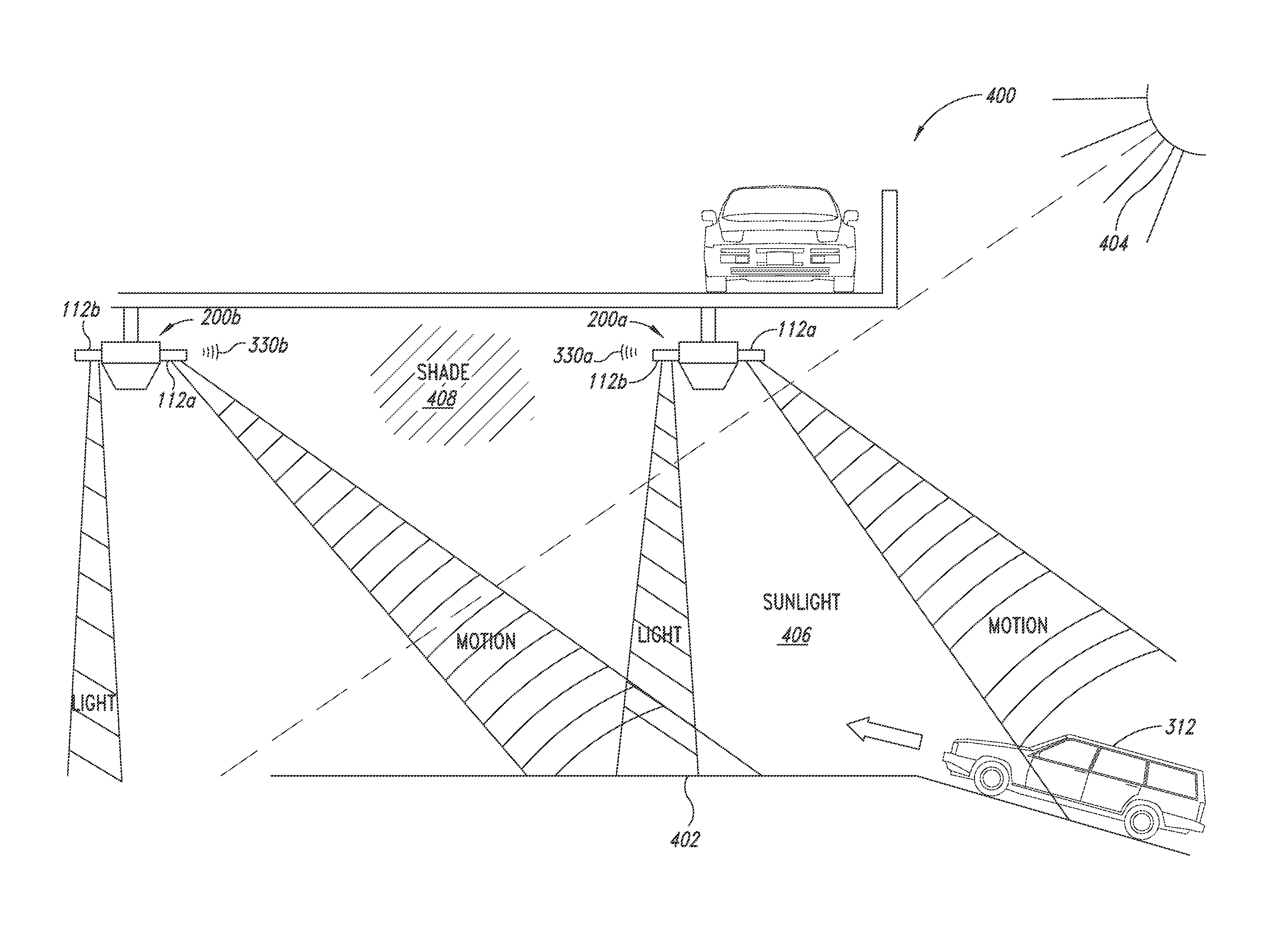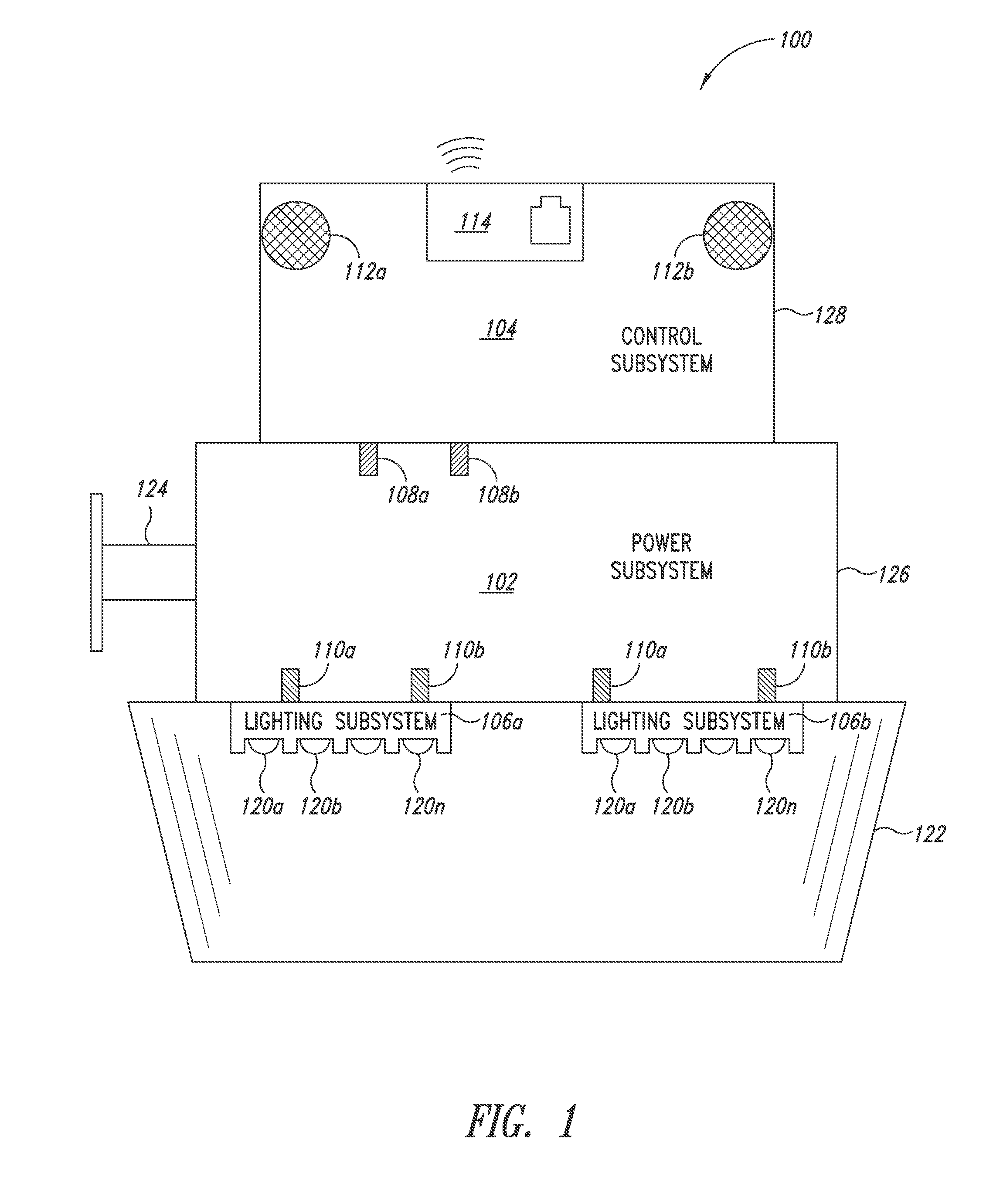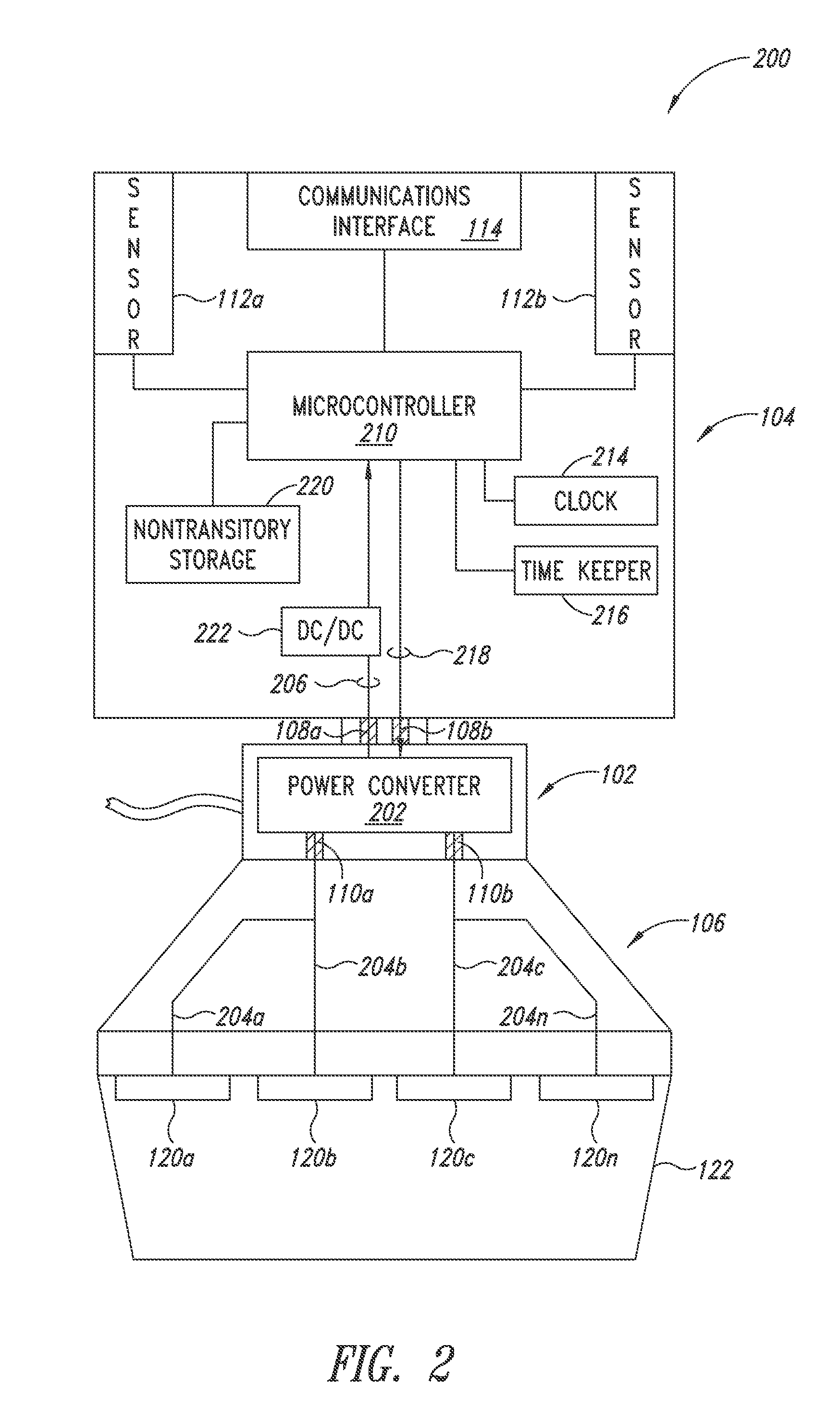Luminaire with ambient sensing and autonomous control capabilities
a technology of ambient sensing and illumination devices, applied in the field of illumination devices and systems, can solve the problems of inefficiency of control, shortening the current trend of cost minimization and environmental consciousness, and achieve the effect of safe and widespread industrial use and safe operation of duties
- Summary
- Abstract
- Description
- Claims
- Application Information
AI Technical Summary
Benefits of technology
Problems solved by technology
Method used
Image
Examples
Embodiment Construction
[0041]In the following description, certain specific details are set forth in order to provide a thorough understanding of various disclosed embodiments. However, one skilled in the relevant art will recognize that embodiments may be practiced without one or more of these specific details, or with other methods, components, materials, etc. In other instances, well-known or well-documented wired and wireless networking protocols such as ZigBee®, Ethernet, power line carrier (PLC), Bluetooth®, IEEE 802.11; well-known or well documented electronic components such as power converters, solid-state lighting systems, and the like; and logical devices such as controllers, motion sensors, photosensitive transducers and the like have either not been shown or shown abstractly and have not described in detail to avoid unnecessarily obscuring descriptions of the embodiments.
[0042]Unless the context requires otherwise, throughout the specification and claims which follow, the word “comprise” and ...
PUM
 Login to View More
Login to View More Abstract
Description
Claims
Application Information
 Login to View More
Login to View More - R&D
- Intellectual Property
- Life Sciences
- Materials
- Tech Scout
- Unparalleled Data Quality
- Higher Quality Content
- 60% Fewer Hallucinations
Browse by: Latest US Patents, China's latest patents, Technical Efficacy Thesaurus, Application Domain, Technology Topic, Popular Technical Reports.
© 2025 PatSnap. All rights reserved.Legal|Privacy policy|Modern Slavery Act Transparency Statement|Sitemap|About US| Contact US: help@patsnap.com



